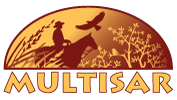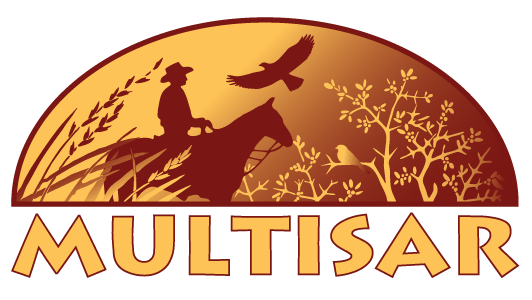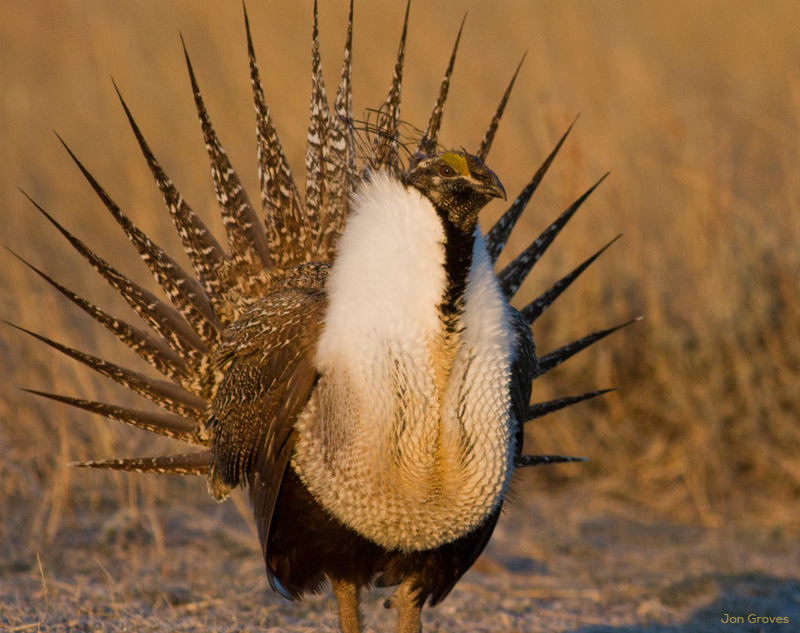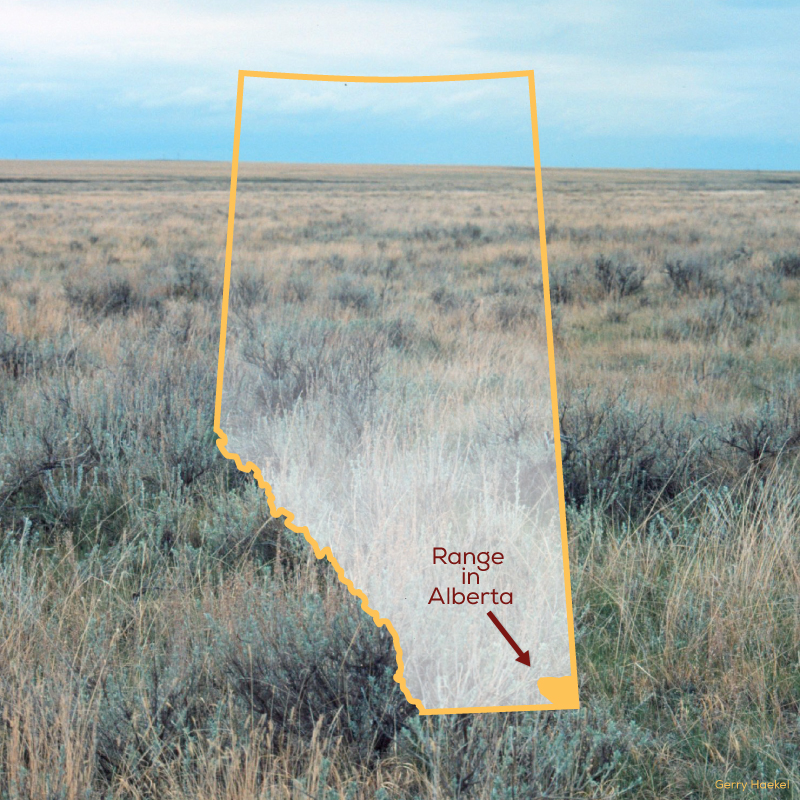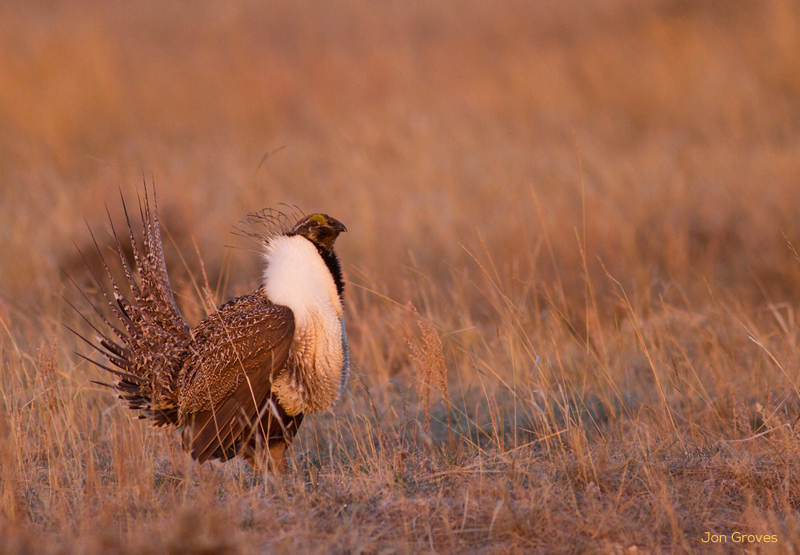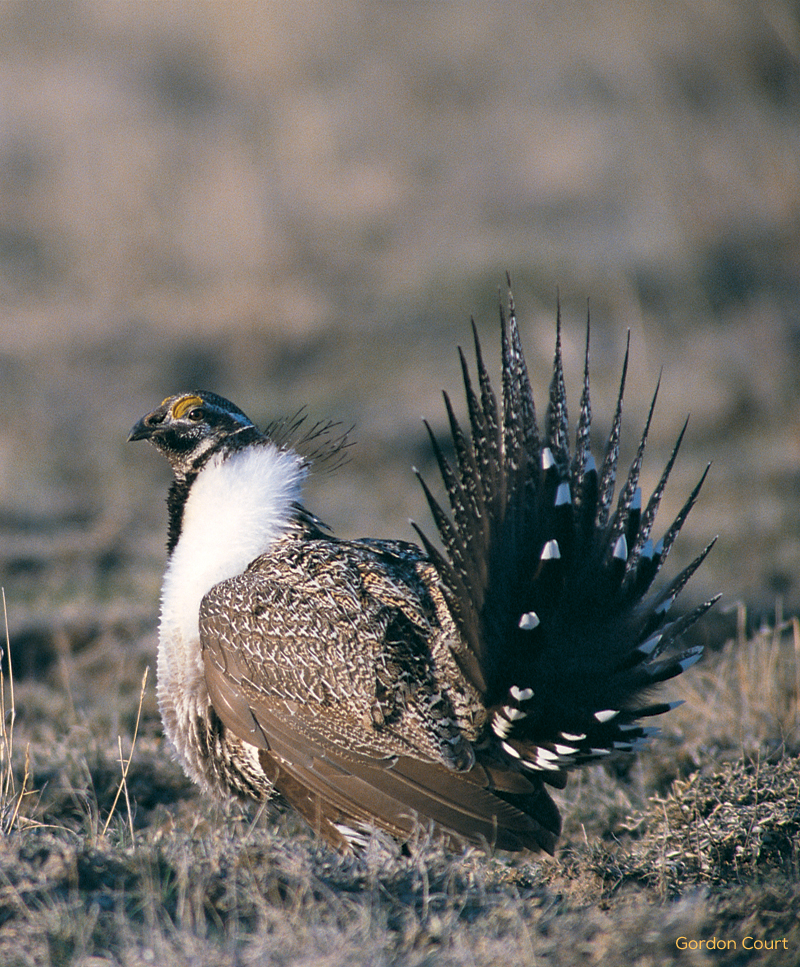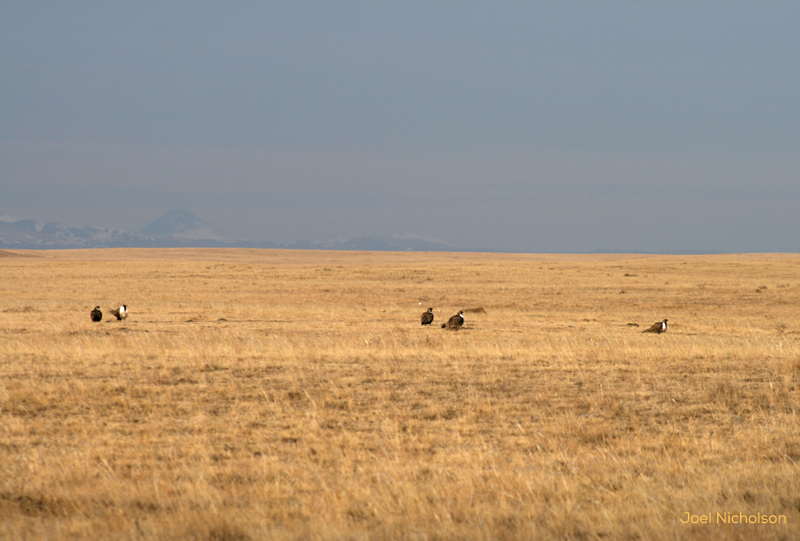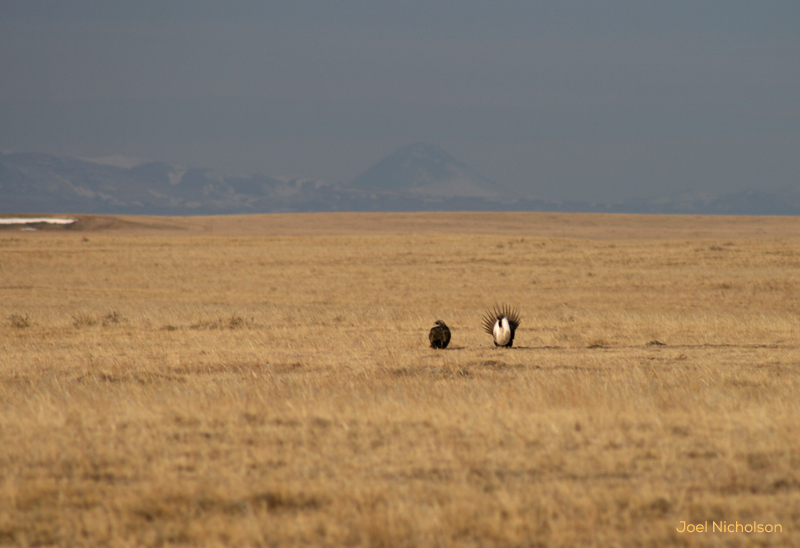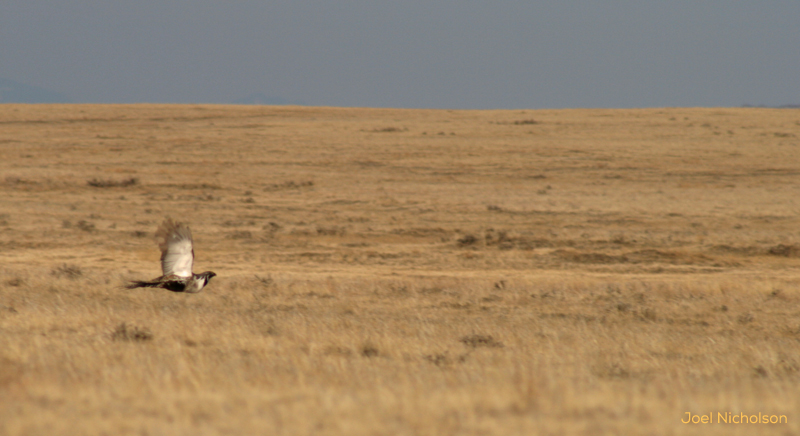Greater Sage-Grouse
Centrocercus urophasianus
Sage for Breakfast, Lunch and Dinner
As their name suggests, Sage-grouse have a strong reliance on sage, particularly silver sagebrush (Artemisia cana). They eat the leaves and use the plant for shelter and protection. While they also eat other plants and insects in the spring and summer, sagebrush makes up 100% of their winter diet.
Gigantic Grouse
The Greater Sage-grouse is the largest grouse in North America, with the males weighing up to 2 kg – think of a very big chicken or a small turkey!
Dancing in the Sage
In early spring, Sage-grouse gather on traditional dancing grounds, called leks. The males fan their tail feathers, strut and make bizarre booming sounds by inflating the large yellow air-sacs on their breast to attract females.
Do Not Disturb!
Sage-grouse are a sensitive species and they avoid human activities, noise and infrastructures. They tend to stay more than a kilometer away from oil and gas well sites and may abandon their leks when there is industrial or other human activity nearby.
Population
Sage-grouse have disappeared from most parts of their historical range in Alberta because of the conversion of grassland to agricultural crops, human disturbance, increased predation and disease. The few remaining individuals are restricted to a small area in the south-eastern corner of Alberta. In 2014, the population was estimated at about 50 individuals.
Wildlife biologists are working hard to try to prevent the further loss and disturbance of their habitat in Alberta and efforts are being made to reverse the population decline through a translocation program and significant habitat improvements.
Current Threats
- The small population size and isolation from other populations of Greater Sage-grouse, leaves the remaining birds more vulnerable to disease and extreme weather conditions.
- Industrial activity in the remaining areas where they are found.
- Invasion of generalist predator species such as ravens, crows, great-horned owls, red foxes, skunks, coyotes and magpie that take advantage of anthropogenic features (e.g., power poles, shelterbelts, old buildings, etc.) to reproduce in or forage from.
- Dugouts, berms and small reservoirs may reduce the natural runoff required to keep sagebrush habitats healthy.
- Sage-grouse are highly susceptible to the West Nile Virus.
- Roads and traffic noise.
- Collisions with fences or other structures.
Species@Risk Quiz
Test your knowledge about Alberta’s grassland species at risk
Greater Sage-Grouse
Question 1 |
Unlike many birds, Sage-grouse cannot eat seeds because they do not have a:
Beak
| |
Gizzard | |
Tail |
Question 2 |
Sage-grouse populations have been affected by:
Loss of habitat
| |
Human disturbance | |
West Nile Virus | |
All of the above |
Question 3 |
Wildlife biologists estimate the number of Sage-grouse by counting:
Nests
| |
Dancing males on leks | |
Grouse poop |
Question 4 |
Approximately how many Sage-grouse remain in Alberta?
1,000 – 2,500
| |
100 - 750 | |
10-75 |
Public
- Stay away from areas containing Sage-grouse leks because of their sensitivity to human disturbance.
- Voice your support for native grassland conservation with your political leaders.
- Educate yourselves and your family about Sage-grouse and their role in the grassland ecosystem.
- Support native grassland habitat by choosing grass-fed meat in the grocery store.
- Donate towards conservation groups that work towards the conservation of Sage-grouse habitat (i.e. the Alberta Conservation Association, Alberta Fish and Game Association, Nature Conservancy Council Canada and Pheasants Forever.
Landowners
- Maintain your native grasslands and keep them healthy.
- Consider reclaiming cultivated lands in southeastern Alberta to sagebrush-grassland habitat. Contact MULTISAR for assistance.
- Adopt beneficial grazing practices that allow for tall grasses and forbs during the grouse nesting season (April – July) and promote range health and long-term sustainability for livestock grazing.
- Minimize impediments to natural water flow, as this affects the health of sagebrush habitats.
- Install fence markers to minimize mortality from collisions with fences in areas known to support Sage-grouse.
- Consult with a biologist to discuss the removal of shelterbelts and old buildings in areas where Sage-grouse are found, to help reduce predator populations.
What MULTISAR Does
- Installs fence markers in Sage-grouse habitat to reduce mortality from collisions with fences.
- Cooperates with landowners to restore cropland to sagebrush-grassland habitat at appropriate locations.
- Provides information to landowners to help them identify important Sage-grouse habitats.
- Promotes beneficial management practices that promote range health to benefit Sage-grouse and sustainability for livestock
- Assists with removing old buildings and shelterbelts in Sage-grouse habitat.
